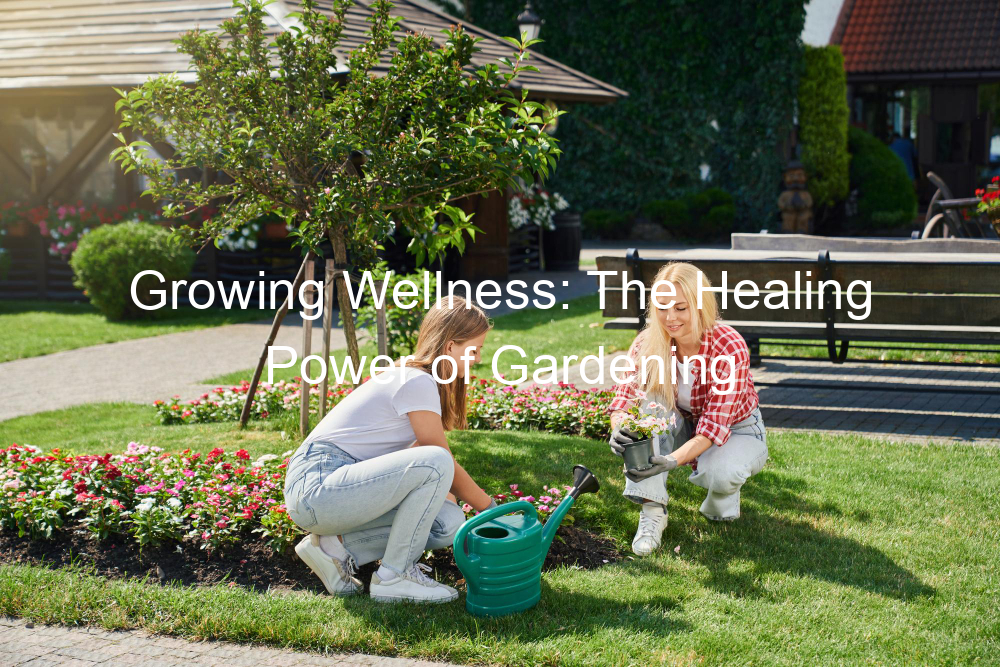Introduction to Cut Flower Gardening
Flowers are the jewels of any garden, adding color, fragrance, and beauty. But did you know that you can cultivate flowers specifically for bouquets? This is what we call cut flower gardening. Let’s delve into this fascinating concept and explore its benefits.
-
- Understanding the Concept of Cut Flower Gardening
Cut flower gardening is a specialized form of gardening where flowers are grown specifically to be cut and used in bouquets and floral arrangements. Unlike traditional gardening, where flowers are appreciated in their natural setting, cut flower gardening focuses on producing the best possible blooms for indoor display.
These gardens are often filled with a variety of flowers, chosen for their color, size, and longevity once cut. The goal is to have a steady supply of fresh, beautiful flowers throughout the growing season.
-
- Benefits of Cultivating Flowers for Bouquets
There are several benefits to cultivating your own flowers for bouquets. Let’s take a look at some of them:
-
- Freshness: Homegrown flowers are fresher than any you can buy. They can be cut at the perfect stage of bloom and immediately used in arrangements.
- Variety: When you grow your own flowers, you can choose from a much wider variety than is typically available in stores. You can grow unique and unusual varieties that make your bouquets stand out.
- Cost Savings: Growing your own flowers can be more cost-effective than buying bouquets regularly. A packet of seeds can produce dozens of plants, each with multiple blooms.
- Therapeutic Benefits: Gardening is known to have therapeutic benefits, including stress relief and improved mood. Plus, the joy of creating your own floral arrangements is immeasurable.
As we can see, cut flower gardening is not just about creating beautiful bouquets. It’s also about the joy of growing, the thrill of harvesting, and the satisfaction of creating something beautiful with your own two hands.
Gardeners’ Delight Flowers: Best Flowers for Bouquets
Creating a vibrant and beautiful bouquet is an art. It requires a keen eye for color, texture, and form. But most importantly, it requires the right flowers. Here, we will explore the top 10 flowers that can transform any bouquet into a gardener’s delight. We will also delve into the world of seasonal flowers that can keep your bouquets fresh and exciting all year round.
- Top 10 flowers for a vibrant bouquet
Every flower has its own unique charm, but some are simply perfect for bouquets. Here are the top 10 flowers that can add a vibrant touch to your arrangements:
- Roses: Known for their classic beauty and rich fragrance, roses are a staple in any bouquet.
- Tulips: With their wide range of colors and shapes, tulips can add a unique touch to your bouquet.
- Peonies: These lush, full-bodied flowers are perfect for adding volume and texture to your arrangements.
- Lilies: With their striking colors and patterns, lilies can be the star of any bouquet.
- Orchids: Known for their exotic beauty, orchids can give your bouquet a tropical flair.
- Hydrangeas: These flowers are perfect for adding a touch of elegance to your arrangements.
- Dahlias: With their intricate petals and vibrant colors, dahlias can make your bouquet stand out.
- Chrysanthemums: These flowers are known for their longevity, making them a great choice for bouquets.
- Gerbera Daisies: With their bright colors and cheerful appearance, gerbera daisies can add a fun touch to your bouquet.
- Calla Lilies: Known for their sleek and sophisticated shape, calla lilies can give your bouquet a modern edge.
- Seasonal flowers for year-round bouquets
Seasonal flowers are a great way to keep your bouquets fresh and exciting throughout the year. Here are some flowers that are perfect for each season:
| Season | Flowers |
|---|---|
| Spring | Tulips, Daffodils, Hyacinths |
| Summer | Roses, Sunflowers, Lilies |
| Autumn | Chrysanthemums, Dahlias, Marigolds |
| Winter | Amaryllis, Poinsettias, Camellias |
By incorporating these flowers into your bouquets, you can celebrate the beauty of each season in a unique and colorful way.
Flower Cultivation Techniques
One of the most important aspects of flower cultivation is understanding how to properly prepare the soil. The health and vitality of your flowers depend greatly on the quality of the soil in which they grow. Let’s dig into the details.
Preparing the Soil
Preparing the soil for flower cultivation involves two main steps: understanding the different soil types and their impact on flower growth, and improving soil health for optimal flower cultivation. Let’s explore each of these steps in detail.
- Understanding soil types and their impact on flower growth
There are mainly three types of soil: sand, silt, and clay. Each type has its own set of characteristics that can either promote or hinder the growth of flowers.
| Soil Type | Characteristics | Impact on Flower Growth |
|---|---|---|
| Sand | Loose and gritty. Drains quickly but doesn’t hold nutrients well. | Flowers may struggle to get the nutrients they need. |
| Silt | Smooth and well-draining. Holds nutrients better than sand. | Flowers can grow well if the soil is not too compact. |
| Clay | Heavy and compact. Holds water and nutrients well but drains poorly. | Flowers may suffer from waterlogged roots. |
Understanding the type of soil in your garden will help you make informed decisions about which flowers to plant and how to care for them.
- Improving soil health for optimal flower cultivation
Improving the health of your soil is crucial for the successful cultivation of flowers. Here are some tips:
- Add organic matter: Organic matter, such as compost or manure, can improve the nutrient content of your soil and help it retain moisture.
- Use mulch: Mulch can help protect your soil from erosion, maintain its temperature, and suppress weeds.
- Rotate crops: Planting different types of flowers in the same spot each year can help prevent the buildup of diseases and pests in the soil.
By understanding your soil and taking steps to improve its health, you can create the ideal conditions for your flowers to thrive.
Planting and Care
Now that we’ve prepared our soil, it’s time to move on to the exciting part – planting our seeds and seedlings, and taking care of them as they grow into beautiful flowers. Let’s explore some best practices and techniques for this process.
- Best Practices for Planting Seeds and Seedlings
Planting is a crucial step in flower cultivation. Here are some guidelines to follow:
- Choose the Right Time: The best time to plant seeds is early spring, while seedlings should be planted after the last frost.
- Plant at the Correct Depth: Seeds should be planted at a depth twice their size, while seedlings should be planted at the same depth they were growing in their containers.
- Space Appropriately: Ensure your plants have enough room to grow. The spacing will depend on the type of flower you’re planting.
- Water Immediately: After planting, water your seeds and seedlings thoroughly to help them settle in.
- Watering, Feeding, and Pruning Techniques for Healthy Flowers
Once your flowers are planted, they’ll need ongoing care to thrive. Here are some tips:
- Watering: Water your flowers in the early morning or late evening to prevent evaporation. The amount of water needed will depend on the type of flower and the soil condition.
- Feeding: Feed your flowers with a balanced fertilizer to provide the nutrients they need. This should be done every 4-6 weeks during the growing season.
- Pruning: Regular pruning helps to encourage new growth and maintain the shape of your flowers. Always prune dead or diseased branches immediately.
Always research the specific needs of the flowers you’re growing to ensure they thrive.
| Planting and Care | Best Practices |
|---|---|
| Planting Seeds and Seedlings | Plant in early spring, at the correct depth, with appropriate spacing, and water immediately. |
| Watering, Feeding, and Pruning | Water in the early morning or late evening, feed with balanced fertilizer every 4-6 weeks, and prune regularly. |
With these best practices and techniques, you’re well on your way to cultivating a beautiful cut flower garden. Happy gardening!
Designing Your Cut Flower Garden
Designing a cut flower garden is a rewarding endeavor that requires careful planning and creativity. The goal is to create a garden that not only produces beautiful flowers for cutting but also looks visually appealing. Let’s explore the two key aspects of designing your cut flower garden: planning for continuous blooms and creating a visually appealing garden layout.
- Planning for Continuous Blooms
One of the main goals of a cut flower garden is to have flowers blooming continuously throughout the growing season. This ensures that you always have fresh flowers to cut for your bouquets. Here are some tips to achieve this:
- Choose a variety of flowers that bloom at different times. Some flowers bloom in the spring, others in the summer, and others in the fall. By planting a mix, you’ll have a continuous supply of blooms.
- Plant in succession. This means planting the same type of flower at different times so that as one group finishes blooming, the next group is just starting.
- Deadhead regularly. Deadheading is the process of removing spent blooms to encourage the plant to produce more flowers.
- Creating a Visually Appealing Garden Layout
While the primary purpose of a cut flower garden is to produce flowers for cutting, it should also be a beautiful space that you enjoy spending time in. Here are some tips for creating a visually appealing garden layout:
- Use color effectively. Think about how different colors will look together, both when the flowers are in the garden and when they’re in a bouquet.
- Consider height. Taller flowers should be at the back of the garden, with shorter ones in front. This creates a sense of depth and makes the garden more visually interesting.
- Think about texture. Different flowers have different textures, from the smooth petals of a tulip to the spiky blooms of a coneflower. Mixing textures can make your garden more visually appealing.
Designing a cut flower garden is a creative process that allows you to express your personal style while also producing beautiful flowers for your home. With careful planning and a thoughtful approach to layout, you can create a garden that is both productive and beautiful.
Maintaining a Cut Flower Garden
One of the key aspects of maintaining a flourishing cut flower garden is managing pests and diseases effectively. This section will guide you through the common pests and diseases that could harm your garden and how to prevent and treat them.
Pest and Disease Management
Managing pests and diseases in your cut flower garden is crucial for its health and longevity. Let’s delve into the common pests and diseases that you may encounter and how to handle them.
-
- Common pests in cut flower gardens and how to manage them
Some common pests that can invade your cut flower garden include aphids, slugs, and beetles. These pests can cause significant damage to your flowers if not managed properly.
| Pest | Damage | Management |
|---|---|---|
| Aphids | Aphids suck the sap from plant tissues, causing wilting and stunted growth. | Use insecticidal soaps or introduce natural predators like ladybugs. |
| Slugs | Slugs chew on leaves and stems, leaving noticeable holes and slime trails. | Use slug pellets or traps filled with beer to attract and kill them. |
| Beetles | Beetles chew on leaves, flowers, and fruits, causing significant damage. | Handpick beetles off plants or use insecticides. |
-
- Preventing and treating common flower diseases
Flower diseases can be caused by fungi, bacteria, or viruses. Common diseases include powdery mildew, black spot, and root rot. Prevention is always better than cure, so it’s vital to maintain good garden hygiene. Remove and dispose of infected plants, avoid overhead watering, and ensure good air circulation around your plants.
| Disease | Symptoms | Prevention/Treatment |
|---|---|---|
| Powdery Mildew | White, powdery coating on leaves and stems. | Use fungicides and ensure plants are not overcrowded. |
| Black Spot | Black spots on leaves, which eventually turn yellow and fall off. | Remove infected leaves and use fungicides. |
| Root Rot | Wilting plants with brown, mushy roots. | Ensure good drainage and avoid overwatering. |
Keep in mind, a healthy garden is a happy garden. By keeping an eye out for these common pests and diseases, and taking the necessary steps to prevent and treat them, you can maintain a vibrant and thriving cut flower garden.
Regular Garden Upkeep
Maintaining a cut flower garden involves a series of regular tasks and seasonal care routines. These practices ensure that your garden remains healthy and vibrant, providing you with beautiful flowers for your home and bouquets.
- Regular tasks for maintaining a healthy cut flower garden
Regular garden upkeep is essential to the health and productivity of your cut flower garden. Here are some tasks you should perform regularly:
- Watering: Most flowers need an inch of water per week, either from rainfall or manual watering. Water your flowers in the early morning to minimize evaporation.
- Weeding: Weeds compete with your flowers for nutrients, water, and sunlight. Regular weeding helps your flowers thrive.
- Deadheading: This involves removing spent blooms to encourage the plant to produce more flowers. It also keeps your garden looking tidy.
- Fertilizing: Flowers need nutrients to grow and bloom. Regularly applying a balanced flower fertilizer can provide these nutrients.
- Seasonal care tips for your flower garden
Each season brings different care requirements for your cut flower garden. Here are some seasonal care tips:
| Season | Care Tips |
|---|---|
| Spring | Start seeds indoors, prepare garden beds, plant out hardy annuals. |
| Summer | Water regularly, weed, fertilize, and deadhead flowers. |
| Fall | Plant bulbs for spring bloom, clean up garden beds, mulch for winter protection. |
| Winter | Plan for next year’s garden, order seeds, and rest! |
By following these regular and seasonal care tips, you can maintain a healthy and productive cut flower garden. Bear in mind, a well-maintained garden rewards you with a bounty of beautiful flowers for your bouquets.
Conclusion: The Joy of Homegrown Bouquet Flowers
As we wrap up our exploration into the world of cut flower gardening, we can’t help but reflect on the sheer joy and satisfaction that comes from growing your own bouquet flowers. This journey, filled with vibrant colors, delightful fragrances, and the thrill of nurturing life, is one that offers countless rewards.
-
- Benefits and rewards of growing your own bouquet flowers
There are numerous benefits to growing your own bouquet flowers. For starters, you have the freedom to choose the varieties that appeal to you the most, and you can grow them in the colors that match your personal style or home decor.
Moreover, the process of tending to your garden can be therapeutic, providing a peaceful retreat from the hustle and bustle of daily life. It’s also a great way to engage with nature, which has been shown to boost mental health.
Finally, there’s the undeniable satisfaction of seeing your hard work come to fruition when your flowers bloom. This sense of accomplishment is a reward in itself, making all the effort worthwhile.
-
- Encouragement for continued learning and growing
As you continue on your gardening journey, remember that every day is a learning opportunity. Whether you’re a seasoned gardener or a beginner, there’s always something new to discover about the fascinating world of flowers.
Don’t be afraid to experiment with different types of flowers, cultivation techniques, or garden designs. Each success and failure is a stepping stone towards becoming a better gardener.
Most importantly, remember to enjoy the process. After all, the joy of gardening comes not just from the beautiful flowers you grow, but also from the journey of growth and discovery along the way.
To sum up, growing your own bouquet flowers is a rewarding endeavor that offers numerous benefits. It’s a journey of learning, growth, and personal satisfaction. So, why not give it a try? You might just discover a new passion and a source of joy in your life.





